Highlighting Australia
- As a proudly Australian initiative, we’re excited to showcase a collection of Australian stories, music, tributes and more.
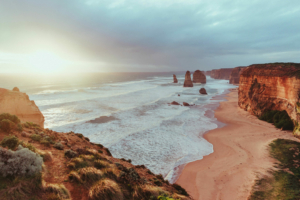
Join activities, celebrations, study groups, spiritual empowerment and education programs for young people, and more.
Baha’i beliefs address essential spiritual themes for humanity’s collective and individual advancement. Learn more about these and more.

Featured in: Abdu'l-Baha
Abdu’l-Baha—the eldest Son of Baha’u’llah—was the Baha’i Faith’s leading exponent, renowned as a champion of social justice and an ambassador for international peace.
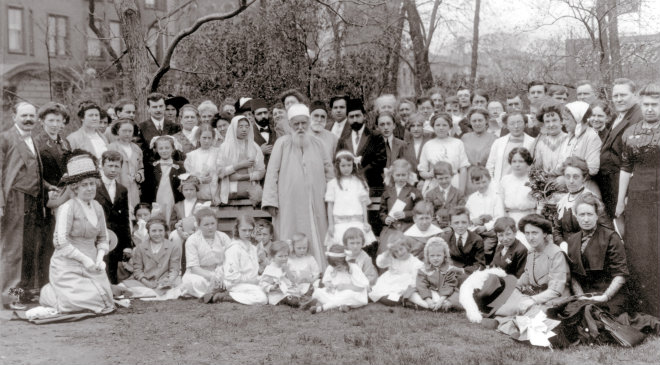
In a small breakfast restaurant in downtown Chicago I received a jolt, a surprising reminder of what was really important to me.
“That’s a nice ring,” a young African-American waiter said to me, after glancing at my Baha’i ring with its symbols of unity, the fundamental principle of the Baha’i Faith.
It was the first time that anybody had ever commented on it, and the remark came when there was strong competition for my attention.
In the final two weeks of the 2012 presidential election campaign, the media drumbeat was increasing in intensity as the people of the United States were subjected to special pleading to win their votes.
It was a fascinating and important time to be in that country, but the young man’s inquiry reminded me that the eternal realities, the things of the spirit are far more enduring and significant than current contests for political power.
The many personalities being promoted for political purposes seemed almost one dimensional in my eyes compared with one who had visited the United States in 1912.
I left the restaurant, and as planned, took the train to Wilmette where 100 years ago, the head of the Baha’i Faith, Abdu’l-Baha (1844-1921), laid the cornerstone for a Temple that is now one of the most outstanding architectural features of a city that is deservedly famous for its buildings.
For Baha’is, though, the Temple is much more than a building. It is the very symbol of unity, as Abdu’l-Baha once explained. It also has mystical links to the Shrine of the Bab in Haifa, the construction of which He had recently completed with enormous difficulty, including facing a death threat from the tyrant of the time.
As I walked along a golden avenue of autumn leaves towards the Temple, it was not so much its spiritual role that occupied my mind but rather the example of compassion and love that Abdu’l-Baha displayed on the way to the foundation ceremony on 1 May, 1912.
Instead of hurrying to the crowd awaiting him, He stopped on a nearby bridge—one that I was to visit—and there spent time with Corinne True, a principal figure driving the temple project. Her son Davis, 25, had passed away the day before from tuberculosis. No doubt in their private conversation, Abdu’l-Baha consoled her with words of great comfort inspired by the teachings of His father, Baha’u’llah (1817-92), the Prophet-Founder of the Baha’i Faith. I thought of it as a reminder to us all of the spiritual priority of love for one another.
The temple, completed four decades later, has an exterior that combines majestic strength with lace-like beauty. The soaring interior uplifted my heart. And there, in a special roped-off area was the rough-hewn cornerstone laid by Abdu’l-Baha.
With me was an excellent guide, a volume entitled Abdu’l-Baha in America by Robert H. Stockman. The book served me well while travelling as well as on my return to Australia when I was able to read it informed by the memories of the places I had visited. (A day-to-day account of the 1912 visit can be found in the fascinating book Mahmud’s Diary.)
Many have tried but most admit they cannot adequately describe Abdu’l-Baha. I count myself as one of them but from the Stockman book, I could see that, as well as His other virtues, it was the love, the wisdom, the humour, the strength, the sweetness of personality of Abdu’l-Baha that transfixed, transported and transformed so many of those He met on His demanding eight-month journey through the United States and Canada. Some reported being deeply affected by the very timbre of His voice, and others described the physical vibrations they experienced in His presence.
His was a coast to coast journey (and up to Canada) to some 50 cities and towns, involving about four talks a day, many private interviews, and extensive newspaper coverage. He was to impress not only Baha’is, their friends, spiritual seekers and the curious, but also clergymen, rabbis, leaders of thought and such public figures as the inventor of the telephone, Alexander Graham Bell, former US president Theodore Roosevelt, the writer Khalil Gibran, the author and poet Rabindranath Tagore, the Treasurer of the United States Lee McClung, armaments manufacturer Hudson Maxim, and the billionaire Andrew Carnegie.
With the aid of my book, I came to understand that Abdu’l-Baha had clear aims for His journey, and that the intelligent, inspired techniques He employed attained enduring results for Baha’is not only of North America but of the world, as well as for the spiritual history of humanity.
He had come, He told reporters, for the cause of universal peace, the oneness of humanity, and fundamental unity of the divine religions. He often spoke about the prophetic mission of Muhammad to Christians in their churches, and that of Jesus to Jews gathered in Synagogues.
He gradually unfolded and developed His teachings on those topics as well as on others such as racial and gender equality, and the role of the future Universal House of Justice, the international governing body of the Faith.
My next stop was Boston, Massachusetts where a Baha’i friend took me to view the grave of the prominent businessman Harry Randall who became a Baha’i in 1912 during the visit of Abdu’l-Baha. I drove along the avenue where Abdu’l-Baha had stayed, and walked the perimeter of Copley Square where He had spoken.
Then it was on to Eliot, Maine, and to the Green Acre Baha’i School set among sweeping lawns studded with trees, and bordered by the Piscataqua River. There Abdu’l-Baha resided and taught from 16-23 August 1912. In the room He occupied, there was a stillness and special feeling that confirms His words: “This is a delightful spot; the scenery is beautiful and an atmosphere of spirituality haloes everything”. My Baha’i hosts lived up to his injunction: “When you go to Green Acre, you must have infinite love for each other… I want you to be happy in Green Acre, to laugh, smile and rejoice in order that others may be made happy by you…”
There and at many other places during His journey from the east to the west coast of the continent, Abdu’l-Baha spoke of the great potential future role of North America (the United States and Canada) in establishing universal peace.
The teaching vital to achieving such an aim was the pivotal Baha’i teaching of the oneness of humanity. It directly challenged, as Stockman points out, the dominant cultural assumption of the time: the conflation of race, religion and progress – that white and Christian (mainly Protestant) equalled true civilization. While praising the material civilization in North America, He reminded His listeners that its spiritual civilization had to be equally developed.
Many of the talks on these and associated subjects were delivered in New York, my next destination. One evening, I entered the Church of the Ascension (Cnr 5th Avenue and 10th Street) where on 14 April, 1912 Abdu’l-Baha delivered a remarkable address. Its text can be found on pages 11-13 in the book that contains many of His North American talks, Promulgation of Universal Peace.As with most of His talks, He began by mentioning something that all could relate to, then made a transition to a spiritual principle, illustrated it firstly by the example of Jesus Christ, then by that of Baha’u’llah and concluded with an exhortation. In this case, He ended by chanting a prayer with His melodious voice, captivating all present. The text of that prayer is pure spiritual poetry.It was a warm and special atmosphere inside the church. I returned the smile of a clergyman who was walking down the central aisle and I wandered around in awe of the experience.Then I walked down along the lamp-lit pavement of West 10thstreet, looking for number 48—and there it was, the former home of the painter and Baha’i, Juliet Thompson. It was a place often visited by Abdu’l-Baha, the occasions described so colourfully not only by Juliet herself but also by the Baha’i author and journalist Marzieh Gail. I stood on the sidewalk and tried to think of those glorious days—the jokes, the painting, and the spiritual lessons. I took a photo of the elegant exterior and mentioned something about the house to a curious passer-by. Khalil Gibran lived over the road, something I realised only later.On another evening I was walking along West 67thStreet looking for number 39, the former home of Hilda Phillips, a Baha’i whose home was the venue for a talk by Abdu’l-Baha on 12 April, 1912. The doorman saw me and asked “What address are you after?” When I told him that this was a place where the son of Baha’u’llah spoke, he expressed his interest and pleasure and warmly invited me in to take photographs, including of an elevator that was there in 1912. He told me that many great artists over the years had visited the building.
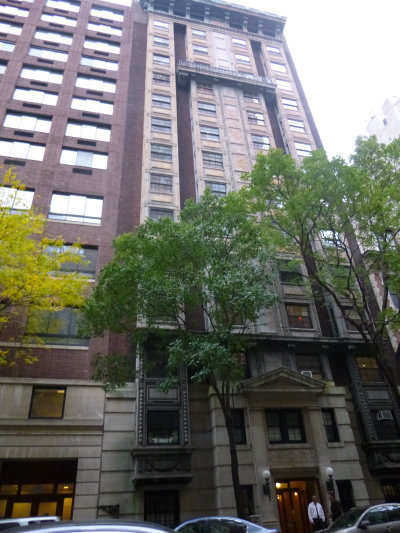
“Service to humanity is service to God,” Abdu’l-Baha said as part of a wonderful talk in that building. “You are the reality of your deeds and actions.” Later I looked out a bus window, and there was the Bowery, then and now a place for the homeless. He distributed silver coins to the men there, impressing a famously hard-bitten journalist, Kate Carew, that here was somebody who gave money out in America rather than taking what he could get. Back in Australia, I read how He had visited the Museum of Natural History, a place I had visited ignorant of the fact that I was gazing at the same famous exhibit of the whale as He had seen.
Even though I missed some of those connections, I was pleased at the time to realise that I was in New York on the anniversary of the Birth of Baha’u’llah (November 12), just as Abdu’l-Baha had been exactly 100 years earlier.
After three weeks of demanding activity in the United States (I was also gathering material as a journalist), I became increasingly aware of how exhausting a schedule it must have been for Abdu’l-Baha.
Unlike me, He was close to 70, was sometimes ill and had infirmities from His imprisonment. He had constant demands placed upon Him, and was under regular scrutiny. Virtually His every word and action was recorded for posterity. He kept to His mission, day after day for 239 days displaying “a vitality, a courage a single-mindedness, a consecration to the task”, as His successor, Shoghi Effendi (1897-1957), wrote in his masterly history God Passes By.
Abdu’l-Baha helped Baha’is understand the importance of such crucial issues to an infant faith as steadfastness and loyalty, and in particular obedience to the Covenant instituted by Baha’u’llah (associated with successorship and governance). He was also preparing them for their task of taking the Baha’i teachings throughout the world.
As a result of His visit, a Baha’i administration was made to function, one that was replicated in form worldwide and that to this very day operates with effectiveness and harmony. For Australian Baha’is, His visit had particular importance because meeting Him inspired John Henry Hyde Dunn and his wife Clara to introduce the Baha’i Faith to Australia some eight years later. In my reading about the visit, I experienced a mixture of emotions. I felt sad when I read that once during His trip, He rolled up His sleeves and an observer noted that there were the scars of chains–He had been a prisoner for 42 years. I was also impressed to read that He often cooked for His guests. I loved reading later that during a visit out of New York to address a peace conference, He became so happy in the beauty of the natural environment, He burst into song, and encouraged others to do likewise. I liked His jokes, and His shrewd understanding that journalists sometimes had less than transparent motives. Only after the event, did I realise that my train trip from New York to Washington DC was by made Abdu’l-Baha a century earlier. Like Him, I also visited the Capitol building. I found it touching that after Abdu’l-Baha had taken an elevator to the top of the Washington Monument, a souvenir of photographs was sent home to His wife in Haifa. I laughed when I read that at a reception He had congratulated the explorer Admiral Peary for confirming that there was nothing at the North Pole.
One night in my room in Washington, I dipped into the Stockman book and discovered to my stunned delight that I was staying on a street where Abdu’l-Baha had delivered some of His great talks on racial unity in 1912. He lived the teaching in many ways, including blessing the Baha’i wedding of an African-American man and a woman of European descent, and later arranging for Europeans to serve African-American guests.
Later, I searched for other venues in Washington DC, but two (a church and a synagogue) seemed to have disappeared. I took a photo of the interesting exterior of the former public library, realising only later at home in Australia that it was where He had delivered some important addresses.
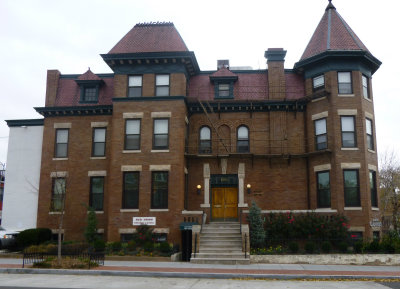
I walked to 1901 Eighteenth Street Northwest, where He had once stayed and took photos of the distinctive building. When I told a receptionist in a ground floor office of the historical significance of the place, she surprised me with a radiant, happy smile. The feeling was that the spirit which once filled the place in human form had returned for that instant.Like nearly all visitors, I went to have a look at the White House. I later read that Abdu’l-Baha was unable for timing reasons to accept invitations to visit the US president and to address Congress. I also read that while a guest at the Californian mansion of Phoebe Hearst, a Baha’i, He spoke about the “humility and selflessness that should characterise the president of the United States.” This still seemed relevant in 2012.It was easy for me to be distracted by all the other attractions the United States provides—the art galleries and museums, the restaurants and entertainment, the natural beauty of the Fall colours, the major national issues under debate, the warm welcome given everywhere to an Australian.
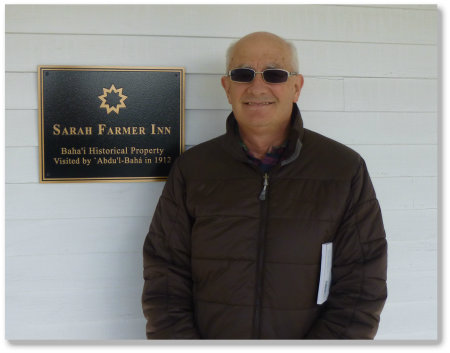
But whenever I focussed on the centenary I experienced a special feeling. Perhaps it was something to do with unity as symbolised on the ring that had been remarked upon by that young man back in Chicago.
I felt a mixture of excitement, calm happiness and the positive version of the “why me?” syndrome. But those descriptions fall short.
It was a mystical feeling. I like to think it was a gift of a special man, an example to us all.
For more information about Abdu’l-Baha’s visit to America, here are two other excellent websites:
"*" indicates required fields
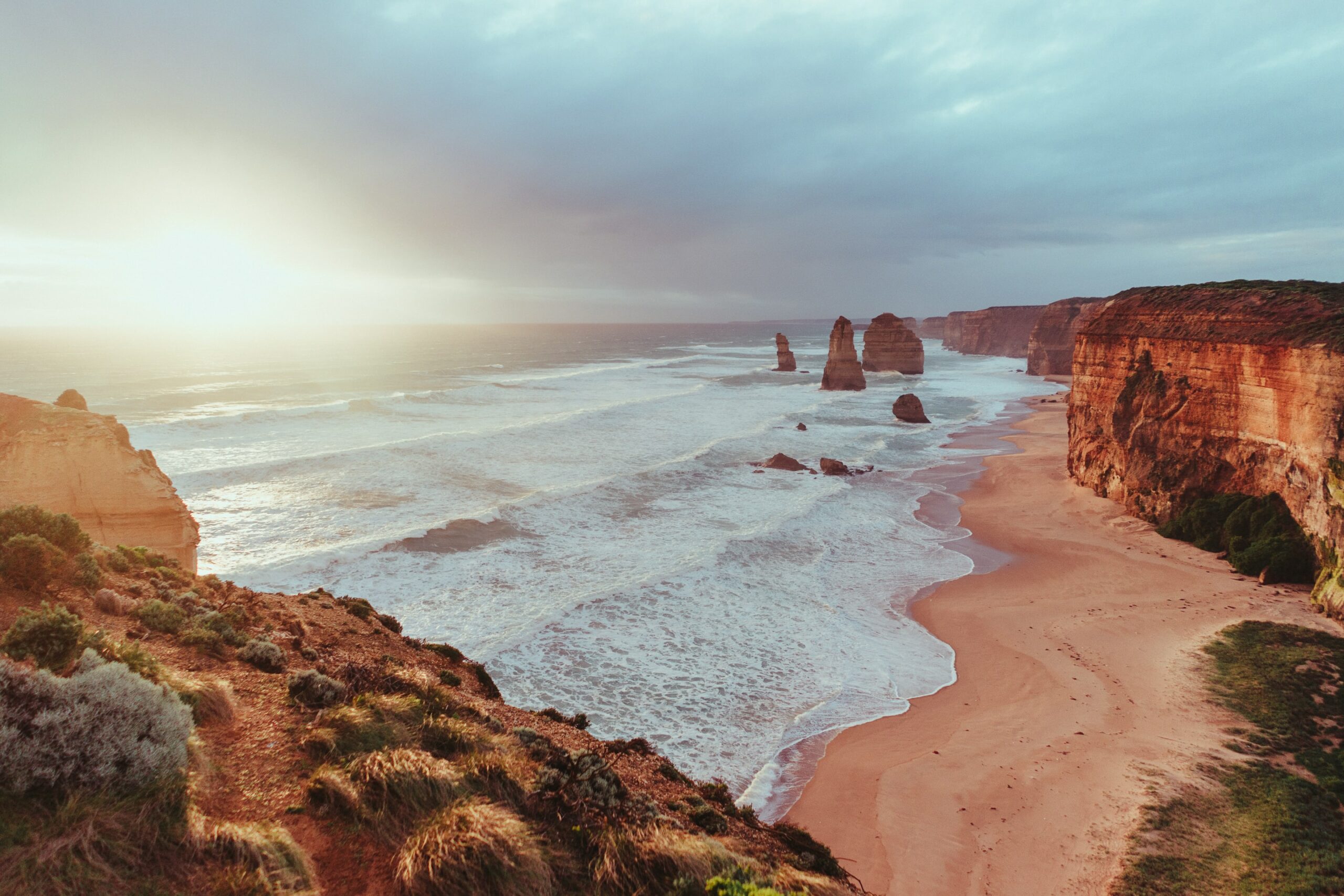
We recognise their continuing connection to land, waters and community. We pay our respects to Aboriginal and Torres Strait Islander people and their cultures; and to elders both past and present.
The views expressed in our content reflect individual perspectives and do not represent authoritative views of the Baha’i Faith.

Visit the site of the
Australian Baha’i Community
and the Baha’i Faith Worldwide
Notifications
Nicely Done! We were feeling much the same in Chicago. The more we learned about where Abdu’l-Baha had visited the better we understand how well he had taken care of us, his hosts. I made a Google map that you might like: http://goo.gl/maps/WsZ4
Candace Moore Hill (December 12, 2012 at 7:04 PM)
Thanks for the kind words, Merican and Candace –the map is great.
Michael Day (January 1, 2013 at 2:30 AM)
Hi Michael – a very good one. nostalgic and captivating.
Such journeys are awe-inspiring and encouraging amidst worldly woes!
Merican (December 12, 2012 at 3:17 AM)
As I am a Bahai I am very glad and pleased. the more we know the story about Abdul-baha we get a very enthusiatic energy and I hope we could further more of it.
thoiba (February 2, 2013 at 7:00 AM)
Please download the DC Baha’i Tour app to see the synogogue and other churches which still do stand.
Lex Musta (January 1, 2021 at 6:27 PM)